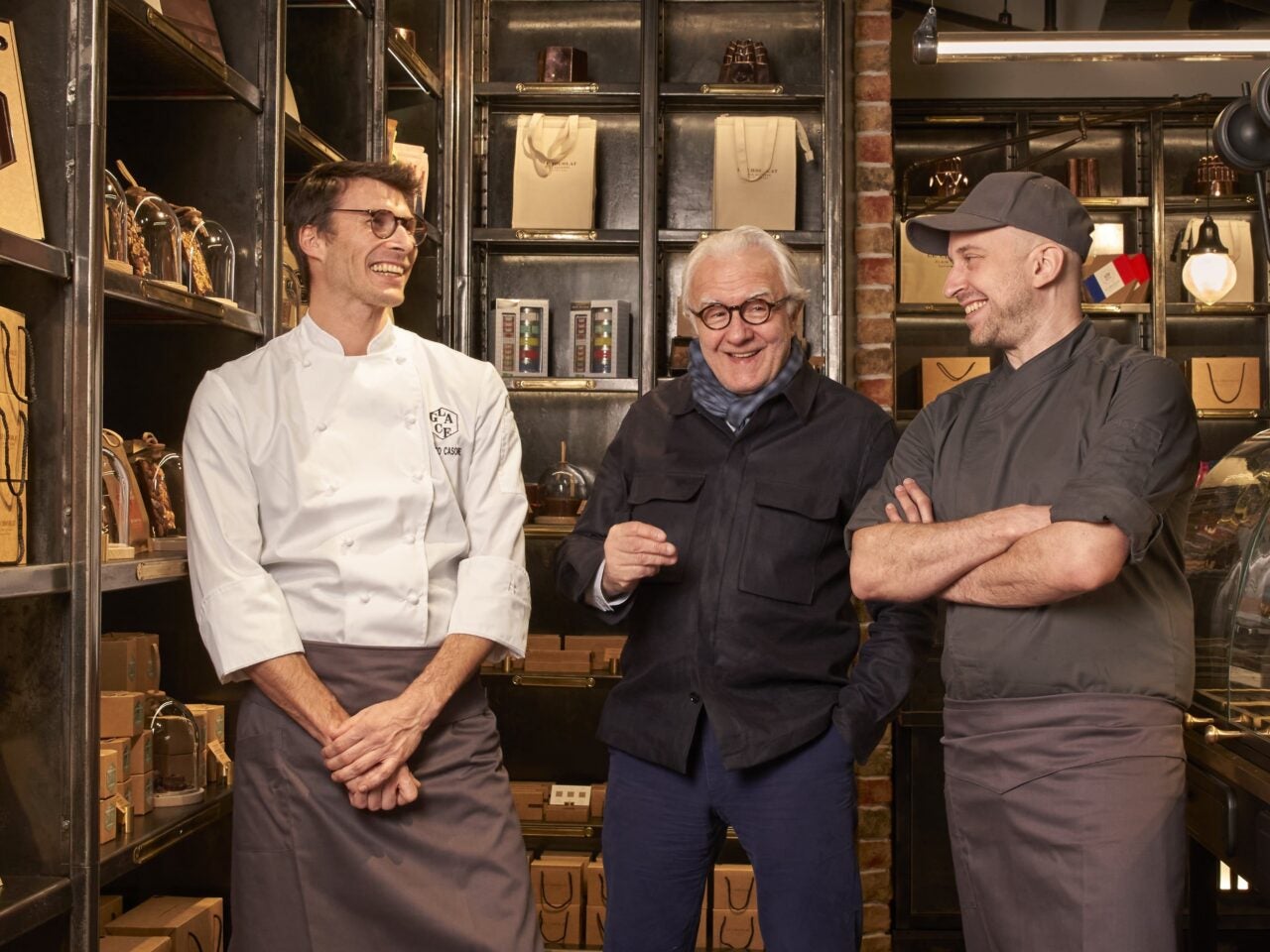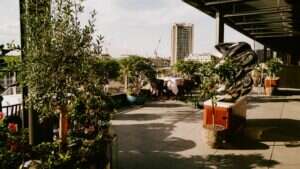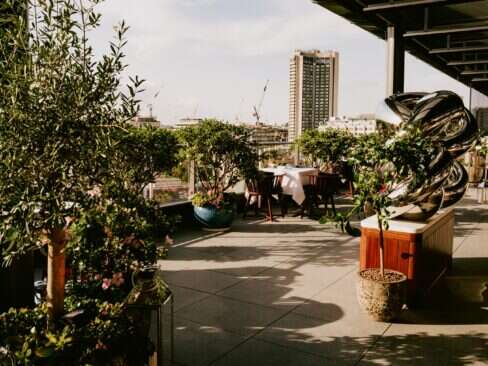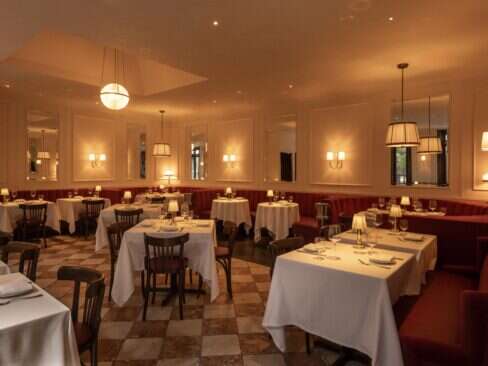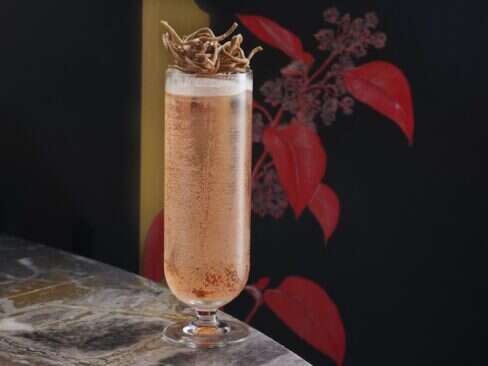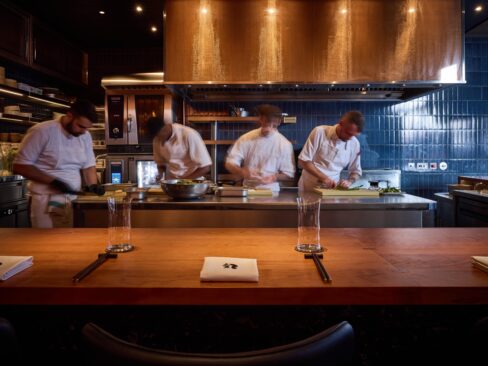When I’m invited to visit Alain Ducasse’s Le Manufacture de Chocolat in Paris, it feels as if I’ve been offered a golden ticket; I’m imagining rivers of chocolate and giant candy canes springing from every corner.
And, when I arrive, although it might not be quite as extravagant as Willy Wonka’s factory, I’m certainly not disappointed. There is something magical about seeing how chocolate is made.
Stepping through the gates at the revered chef’s manufacturing plant set back from the Rue de la Roquette, the first thing I notice is the heady aroma of chocolate.
Head chocolatier Quentin Francis-Gaigneux leads me across a cobbled courtyard to an unassuming cast iron door lined with sacks of cocoa beans. We step inside and the noise hits us. This is a proper factory; everywhere you look machines are grinding, crushing, roasting.
[See also: Jean-Philippe Blondet on his Inventive Approach to Fine Dining]

When Ducasse opened Le Manufacture de Chocolat back in 2013, he didn’t make the decision lightly. The decorated chef – who has 21 Michelin stars to his name – had always dreamt of opening a chocolate factory but he didn’t want a mere assembly line creating run-of-the-mill confectionary.
No – if he was going to make his own chocolate, he would craft it entirely from scratch (“from bean to bar”) in Paris using only the highest quality ingredients. Above all, Francis-Gaigneux tells me, it’s a “story of craftsmanship”.
And so, Ducasse and his team began tracking down vintage machines from Germany and searching for a suitable location to set up a chocolate factory and shop. The premises needed to be on solid ground with no cellar beneath so it could hold the weight of the heavy machinery and have a chimney for extraction. A former garage in Bastille turned out to be the perfect blank canvas.
Standing in Le Manufacture de Chocolat a decade later, it’s remarkable to think just how much work – and money – went into the transformation. Ducasse got his wish: he finally had a place where he could craft his very own artisan chocolates.
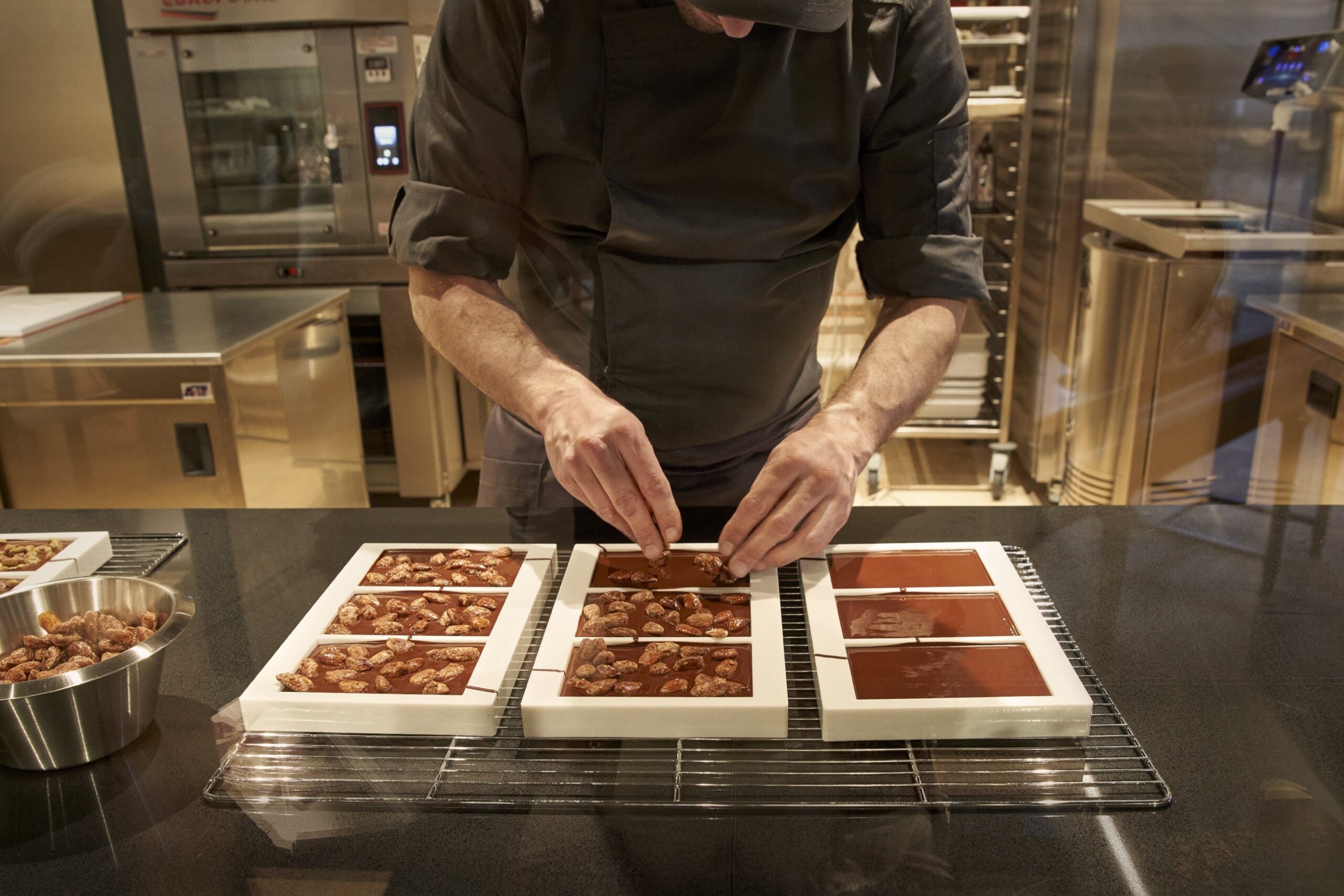
Where does it all begin? The first step, Francis-Gaigneux tells me, is selecting the beans. Ducasse and his team of chocolatiers have a strict criteria: the most important factor is, of course, taste, but sustainable production is also key.
Most of the beans are organic and sourced from far-away places across the globe like Madagascar, Ecuador, and Peru. Before they even arrive in Paris, the beans are harvested, fermented and sun-dried for between eight and ten days.
Thousands of kilos of whole cocoa beans arrive at the factory in sacks like the ones we pass in the doorway. Francis-Gaigneux leads me to the first machine where a smartly dressed chocolatier is selecting the best beans while occasionally discarding any that don’t meet his exacting standards.
The next step is perhaps the most exciting. An enormous machine roasts the beans (this can take anywhere between 20-30 minutes depending on the size of the bean) and then the tarrare (cocoa cracker) crushes them to remove the shells, leaving behind the cocoa nibs. The discarded shells are recycled and used as soil fertilizer in the city’s gardens.
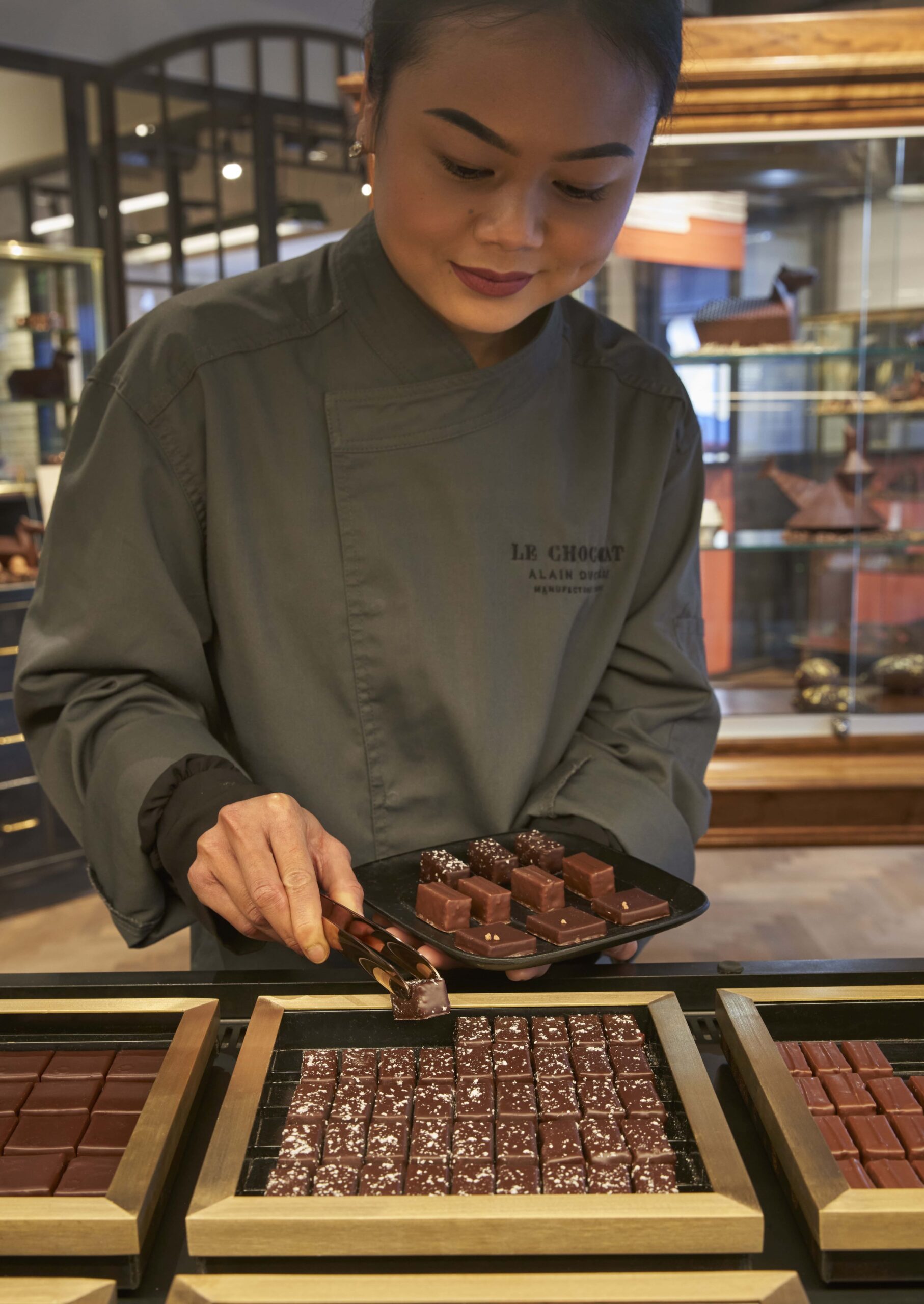
“You can see the difference between raw and roasted,” Francis-Gaigneux tells me, grabbing a handful of nibs. “Want to taste? Voila!” The slightly bitter, nutty cocoa nibs are so moreish I could happily take a packet home to snack on, but this is just the start of the process.
The nibs are heated and ground to form a rich cocoa paste which is mixed with organic cane sugar and powdered milk (if making milk chocolate). Ducasse adds as little sugar as possible allowing the flavor of the beans to take center stage and ensuring his chocolate creations are as healthy as possible.
Next, under the watchful eye of the chocolatiers, the paste goes through the cylinders of two refiners until the chocolate particle size drops to just 20 microns, giving it a silky-smooth texture.

Over the next 17 hours, the mix is left in the concher where it is heated and gently stirred until the acidity and bitterness start to evaporate. Finally, we walk past a chocolatier tempering the glossy mix and pouring it into molds, tablets, and blocks which will be distributed to Ducasse’s chocolate shops and restaurants across London, Paris and Japan.
At each step of the process, Francis-Gaigneux works closely with Ducasse, making tweaks and experimenting with new recipes to ensure the flavor of the final bar is exactly how he wants it. The level of control he has is astounding; it’s clear he is fiercely dedicated to his craft.
And it’s not just chocolate that is made here, either. The team is also hard at work making praliné bars: a wonderfully indulgent mix of toasted almonds, hazelnuts, and caramelized sugar (the heavenly smell wafts through the factory), smoothed into molds and coated in chocolate.
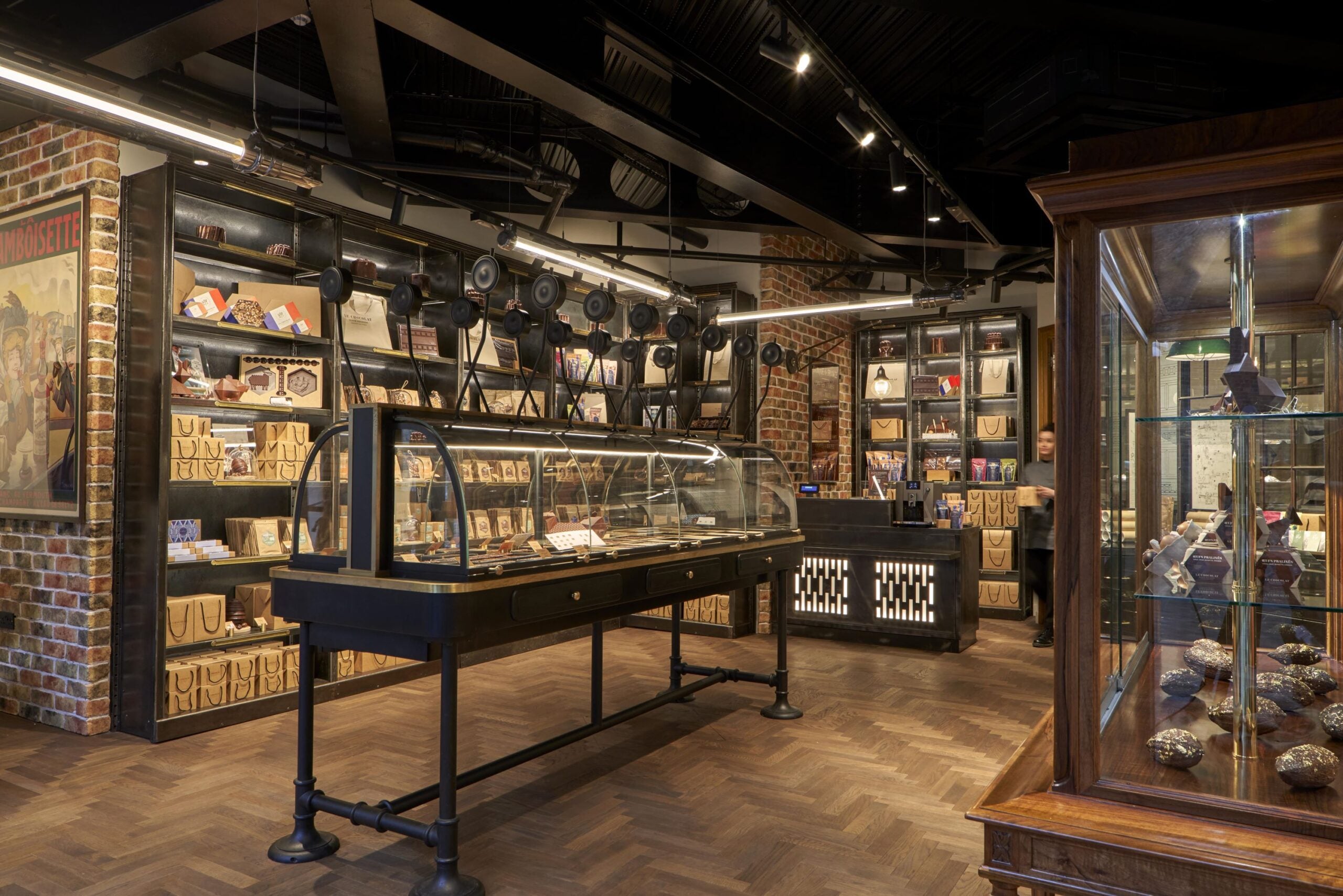
Francis-Gaignaux leads me upstairs where another team of Ducasse’s employees work in perfect unison as if they are part of a choreographed show, coating praliné bites in chocolate, transferring them onto a conveyer belt which takes them through a long cooling tube, and packing them into boxes. “You really can’t pause even for a moment,” he tells me, beaming with pride as he watches his team.
We head back downstairs past the deafening roar of the machines and into the cool, quiet chocolate shop. Here, original coin counting tables from the Banque de France – chosen by Ducasse – are filled with row upon row of hand-crafted chocolates that look almost too pretty to eat, placed artfully atop a bed of cocoa shells.
It’s certainly the best chocolate I’ve ever tasted and no wonder; for Ducasse, the art of chocolate-making goes far beyond the mass-produced confectionary you find in the supermarket. It’s a labor of love.
[See also: Michelin Star Chef Tom Aikens on Risk-tasking and Regrets]





